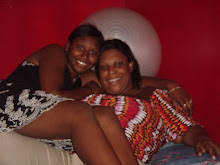Monday, September 7, 2009
7 Quick Facts about Fingerprints
1. Some ancient civilizations used fingerprints as a way of sealing or signing official documents.
2. No two fingerprints are exactly alike
3. Has served all governments worldwide for the past 100 years
4. Fingerprints are the basis for criminal history foundation at every police agency on Earth
5. Remains the most commonly used forensic evidence worldwide
6. Tens of thousands are added to fingerprint databases daily in America
7. Worldwide, fingerprints gathered from crime "scenes lead to more suspects and generate more evidence in court than all other forensic techniques combined"
http://www.onin.com/fp/fphistory.html
http://odec.ca/projects/2004/fren4j0/public_html/history_of_fingerprinting.htm
Posted by D. Alex Pender at 8:08 PM 0 comments
1. History of Fingerprinting
- 1686: Marcello Malpighi, a professor of anatomy at the University of Bologna, noted ridges, spirals, and loops in fingerprints. Although he mentioned this, he did not mention there value as a tool of identification.
- 1823: John Evangelist Purkinje published his thesis discussing nine fingerprint patterns but did not mention there value to identification.
- 1858: Sir William James Hershel first used fingerprints on native contracts. He only did this to scare the people for if they wanted to back out of a signed contract. This was the first way that the English used fingerprints as identification.
- 1882: Gilbert Thompson used his own thumb print on a document to prevent forgery.
- 1891: Juan Vucetic began the first fingerprint files.
- 1903: The New York State Prison system began using fingerprints for criminals.
- 1905: U.S. Army begins using fingerprints
- 1907: U.S. Navy begins using fingerprints
- 1908: U.S. Marine Corps starts using fingerprints
- 1946: The FBI had processed 100 million fingerprint cards in manually maintained files
Posted by D. Alex Pender at 8:06 PM 0 comments
2. Types of Fingerprints
There are three kinds of fingerprints: Patent, latent, and impressed
1. Patent prints which are also known as visible prints are able to be seen with the naked eye. They can be when blood, dirt, ink or grease on the finger come into contact with a smooth surface and leave a friction ridge impression that is visible without development.
2. Latent prints are not apparent to the naked eye. They are formed from the sweat from sebaceous glands on the body or water, salt, amino acids and oils contained in sweat. The sweat and fluids create prints that must be developed before they can be seen or photographed. They can be made sufficiently visible by dusting, fuming or chemical reagents.
3. Impressed prints are also called plastic prints and are left in soft pliable surfaces, such as clay, wax, paint or another surface that will take the impression. They are visible and can be viewed or photographed without development.
http://odec.ca/projects/2004/fren4j0/public_html/types_prints.htm
Posted by D. Alex Pender at 8:05 PM 0 comments
3. Techniques/Chemicals used to Devlop Prints
Silver Nitrate: This chemical is used to expose latent prints. This chemical is found in white and black photographic film. When silver nitrate is applied to a latent fingerprint, the silver nitrate interacts with the chloride found in fingerprint residue and forms silver chloride. The silver chloride reveals a black or reddish-brown fingerprint in the presence of ultraviolet light.
Sudan Black: This method develops fingerprints on a greasy or waxy non-porous surfaces such as glass, metal, interior of gloves, candles, and milk cartoons.
Zinc Chloride: This traditional method enhances prints on porous material after processing with Ninhydrin. Zinc Chloride is offered as a 1 liter solution in Methanol.
http://wiki.answers.com/Q/chemicals_used_in_forensic_studies
Posted by D. Alex Pender at 8:04 PM 0 comments
4.Shapes and Patterns of Fingerprints
Arches are found in about 5% of fingerprint patterns encountered. The ridges run from one side of the pattern to the other and make no backward turns. There are four types of arch patterns: plain, tented, radial, and ulnar
Whorls are found in about 25-35% of the fingerprints encountered. Some of the ridges in a whorl make a turn through at least one circuit.Whorl patterns are any patterns that contain two or more deltas. There are four kinds of whorls also: Plain, central pocket loop, double loop and accidental.
Loops are seen in about 60-70% of the fingerprints encountered. One or more of the ridges enter on either side of the impression, re-curves, touches or crosses the line running from the delta to the core and terminates on or in the direction of the side where the ridge or ridges entered. each loop pattern has one delta, one core, and a ridge count. There are two types of this pattern: radial and ulnar.
http://odec.ca/projects/2004/fren4j0/public_html/fingerprint_patterns.htm
Pictures:
http://safety-identification-products.com/fingerprint-information.html
Posted by D. Alex Pender at 8:04 PM 0 comments


